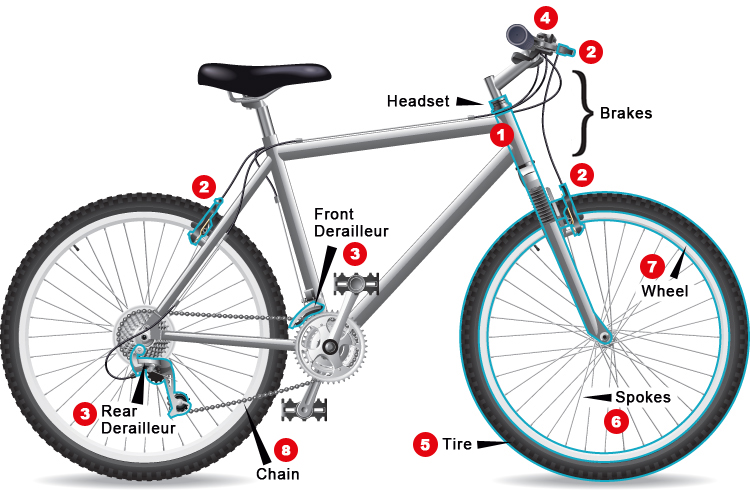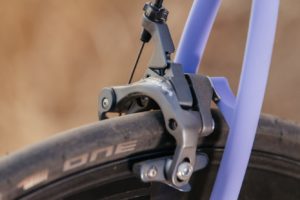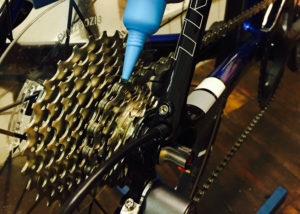You may not get rusty after not riding for a while, but your bike just might. Doing a regular bike tune-up is what will keep you cruising safely and comfortably, and will make your bike last for the long haul. Routine bike maintenance isn’t complicated, but it can take some dedication. When you’re headed out for a long ride, or are just pulling your bike out of storage, you may want to just hop on and go, but it’s better if you establish a pre and post ride routine that includes a little bit of TLC.
It’s recommended that you get a bike tune-up every 2000 miles, but it’s great to make a habit of checking things off this list.

Bike Tune-Up Checklist
Make Sure It’s Clean
You should always put your bike away clean, but if you happened to stash it away before giving it a good wipe down, take the time to clean it now. Use some degreaser to clean off the chain, chainrings, derailleur and cassette. Then use a wet rag to to give the whole frame a wipe down.
Check Your Brakes
Next you’ll want to check your brakes. First, look at the pads and check for signs of wear and tear. If you can see lines or metal poking through the brake pads, then it’s time to replace them. Adjust them so they are hitting the rim properly, and make sure the lever pull isn’t too loose or too tight. If you find they are grinding after being adjusted, you may need to sand them down or check your rims for imperfections. Take a look at your brake cable for wear, looking out for and loose strands or rust.
Check Your Seat
Check that your seat is firmly in place and hasn’t wiggled loose over the miles.
Tire Pressure
This may be a temping one to skip, but you should always check your tire pressure before heading out on a ride. To do this, use a gauge and match the psi to the numbers printed on the side of the tire (most will be around 120 psi).
 Check Your Chain
Check Your Chain
Chains travel countless times over sharp gears, often under a heavy load. They wear out and stretch over time because of dirt, gunk and attrition. A little bit of chain stretch over time is ok and will always occur. The problem becomes when it stretches too far and the teeth on the cassette begin to wear out as well. Before long you will not only have to replace the chain but the cassette as well.
You’ll want to replace your chain every 1,000 – 2,000 miles, once a year, or whenever the chain is starting to show signs of wear.
Lube It Up
Make sure your bike is lubricated properly as it protects moving parts from excessive wear and tear (choose an appropriate lube for the riding conditions you’re in). On the other hand, make sure not to go nuts as too much lubrication will attract dirt and cause just as much damage. Allow the lube to soak in and then wipe any excess off with a clean rag.
Most importantly you want to lube the chain, but also all the other moving parts including brake and derailleur levers, and cables. You’ll also want to grease any threaded bolts such as the stem, derailleurs, and pedals. If you have any bearings apart, make they are all well greased.
Inspect Your Bike
Inspect the frame for cracks or serious dents that are more than just cosmetic. Specific areas to look at are the joints particularly around the head tube and bottom bracket. If there are any cracks, even if it looks like it’s just paint, take the bike to your local bike shop to be looked at by an expert.